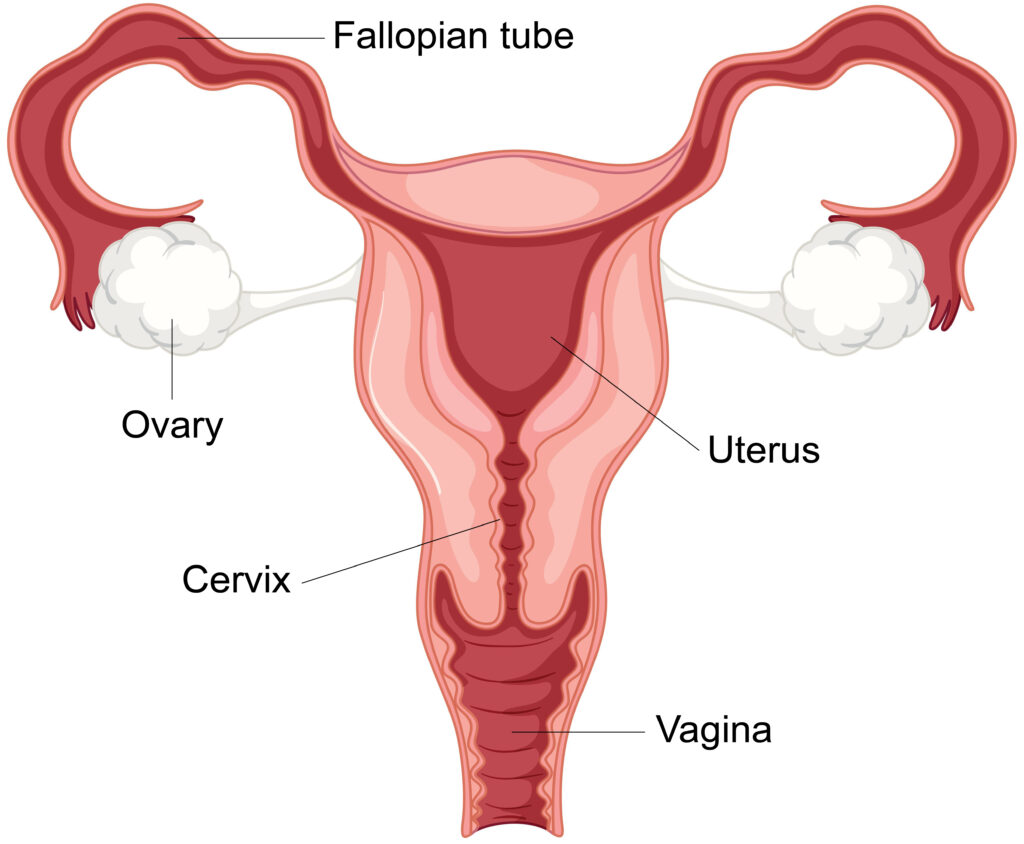
The menstrual cycle is a series of important events that occur throughout a woman’s reproductive life. Beyond just monthly periods, the menstrual cycle is a complex and dynamic process, influencing a woman’s physical, mental, emotional and reproductive well being. This process occurs in every woman, but is not well understood. Today’s post aims to simplify the menstrual cycle. So, let’s get to it!
What is the Menstrual Cycle?
The menstrual cycle is a series of events that occur in a woman’s reproductive system in order to prepare for pregnancy. These events are regulated by hormones particularly estrogen and progesterone and typically last for about 28 to 35 days
The menstrual cycle is in four phases:
- Menstrual phase: This is the phase of the menstrual cycle where the lining of the uterus (womb) is shed and menstruation occurs. Bleeding typically would last for 3-5 days. At this phase, a woman may experience fatigue or mood changes as a result of characteristic low levels of hormones such as estrogen and progesterone.
- Follicular phase: This begins on the first day of menstruation and lasting until ovulation. Here, the pituitary gland (in your brain) releases follicle-stimulating hormone (FSH). FSH stimulates the growth of ovarian follicles, one of which will mature into an egg. While this is going on, the level of estrogen begins to rise. This causes thickening of the lining of the uterus to prepare for potential implantation of a fertilised egg.
- Ovulation phase: This occurs at the middle of the menstrual cycle. A surge of another hormone -Luteinizing Hormone (LH) triggers the ovaries to release a mature egg. A woman may experience a slight rise in temperature as well as changes in cervical mucus, which becomes clear and stretchy.
- Luteal phase:The luteal phase spans from about Day 15 to 28. The egg leaves the ovary and travels down through the fallopian tubes of the uterus. The level of the hormone progesterone begins to rise in order to prepare the inner wall of the uterus for attachment of pregnancy. If the egg becomes fertilised by sperm and successfully attaches itself to the wall of the uterus, pregnancy occurs. However, if pregnancy does not occur, the level of the hormones estrogens progesterone would reduce drastically. This causes the thick lining of the uterus to shed. This is seen as the bleeding that occurs during menstruation.
Why should you understand your menstrual cycle?
Understanding your menstrual cycle helps you know your body better and take charge of your reproductive life. When you understand the normal patterns, it becomes easy to detect irregularities which could point to disease conditions like Polycystic Ovarian Syndrome (PCOS), endometriosis and others. Understanding your cycle also helps with family planning, albeit unreliably.
Are all cycles the same length?
Cycle length varies from person to person. If can even vary in the same person, depending on factors such as age, stress and health conditions.
Can you get pregnant during your period?
Although unlikely, sperm can survive in a woman’s reproductive system for up to 5 days. This makes pregnancy slightly possible if you have unprotected sex during menstruation and ovulation occurs shortly after.
Understanding your menstrual cycle helps provide you and your healthcare provider with valuable insight on your reproductive health. If you notice any irregularity in your cycle or have any concern, ensure to speak with your healthcare provider.
Kindly subscribe to our newsletter for more updates from us.









